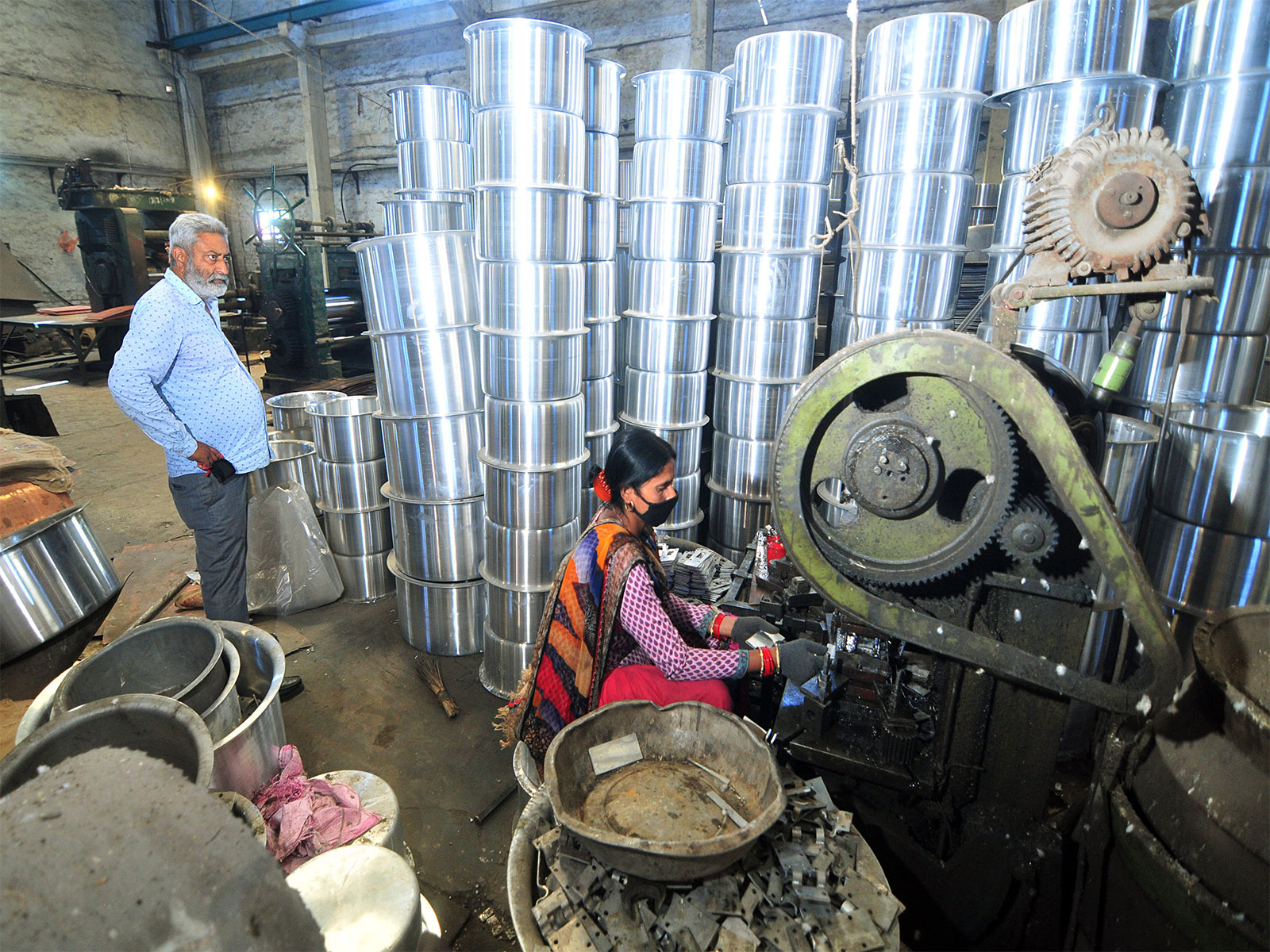How India Inc. uses carbon pricing & science-based targets to achieve high ambition targets
Apr 30, 2022

New Delhi [India], April 30 (ANI/Mediawire): India's energy and economic future is severely threatened by the climate crisis. With the rapid adoption of renewable energy, the transition is underway, and with the announcements of the Panchamrits by Prime Minister Narendra Modi at Glasgow,the country has laid out a five-fold strategy to align to the 1.5 degrees Celsius. India has announced 2070 as the net-zero target year and targets like reducing the economy's carbon intensity by 45 per cent by 2030 and meeting 50 per cent of energy requirements through renewables by 2030.
The transition leap to net-zero would be driven by the interoperability of different drivers and technologies. Businesses are taking steps toward behaving responsibly beyond the regulatory requirements. India Inc. has started understanding the merits of setting its businesses on a low carbon transition pathway by setting emission reduction targets and facilitating green transitions through tools like internal carbon pricing (ICP) and science-based targets (SBTs).
Carbon Pricing captures external costs of Greenhouse gas emissions
Currently, India has not defined any carbon price, while the cess on coal had been acknowledged as a form of a carbon tax in the past, the proceed soft the fund have not been deployed for carbon mitigation. While there has been no national carbon pricing regulation push, uptake by leading companies in applying ICP has been spurred by voluntary adoption whose indication seen in the CDP India 2021 report, with 31 companies incorporating ICP (25 per cent increase from 2020), and 54 companies planning to adopt ICP in the next two years (63 per cent increase from 2020). CDP is the largest repository of information on how ICP or corporate exposure to carbon pricing regulations is used and viewed by companies all around the world, with data collected every year since 2014.
The sectoral distribution of ICP across the globe as per CDP's 2021 data demonstrates that on average, the biotech, healthcare & pharma sector has the highest ICP across all sectors atUS$57, and the lowest price (by average) isused by the hospitality sector. In India, the materials sector uses the highest ICP at US$51, and this is attributed mostly to the cement sector.
CDP data indicate a correlation between the companies putting a price on carbon and those taking other strategic actions to integrate climate change issues into their business strategy to reduce risk, such as by setting an SBT or sourcing more energy from renewables. Out of the 31 companies that have an ICP in place, 18 companies have gone for ambitious targets and opted for SBTi.
Prarthana Borah, Director, CDP India reflects on the criticality of Internal Carbon Pricing and how it opens pathways for Target setting using science-based methodologies, all of it contributing to India's Net Zero ambition. She says the green transition that India has to undertake for achieving net-zero is not just about achieving a target, it will fundamentally change India's development model. The private sector is playing an important role in the journey tonet-zero. Their action, resources, capacity to innovate, and greater reach are vital to swiftly decarbonize sectors, infrastructure, value chain, and the product/service they provide. The sector has demonstrated a dedicated approach to reducing emissions by incorporating the Science-Based Target Initiative. The CDP report itself mentions that Indian companies stand to collectively lose over INR 7.14 lakh crore if they do nothing to mitigate climate risk in the next 5 years but if done right, an opportunity worth of INR 2.9 lakh crore could emerge. But it is not just a responsibility of the private sector. There is a great opportunity for the private sector to leverage this transition. Carbon credits and the carbon market will play a major role in achieving net-zero as it talks about residual and negative emissions and achieving the same nature-based solutions are going to be important. CDP will assimilate the voice of the corporates and try to raise the issues in form of necessary policy changes and implementation of Carbon Pricing, Corporate Emission reduction target setting, to help India achieve its Net Zero goal
Science-based targets tracking India Inc's Climate ambitions
For preventing the worst impacts of climate change and future-proof business growth, science-based targets (SBTs) provide a clearly defined pathway for companies to reduce GHG emissions. Targets are considered 'science-based' if they are in line with the latest climate science and projected to meet the goals of the Paris Agreement - limiting global warming to well below 2°C above pre-industrial levels and pursuing efforts to limit warming to 1.5°C. The SBTi has become the gold standard for establishing corporate climate pledges in just seven years. Companies adopting SBTs have reported that it boosts profitability, improve investor confidence, drives innovation, reduces regulatory uncertainty, and further strengthens brand reputation.
Indian companies are becoming increasingly climate-conscious as more companies commit to SBTi for the transition towards a low carbon economy. India continues to be the leader among the emerging economies and ranks ninth globally with 76 Indian companies joining the initiative as of April 2022.
SBTi and Net Zero
With the rapid growth in corporate net-zero targets, there is a pressing need for a common understanding of what net-zero means for companies and how they can get there so that the growing momentum behind net-zero targets translates into action that is consistent with achieving a net-zero world by no later than2050.
Informed by IPCC SR15, the SBTi has developed a working definition for net-zero emissions in corporate sector. According to this working definition, reaching net-zero emissions for a company means achieving a state in which the activities within the company's value chain result in no net impact on the climate from greenhouse gas emissions.
According to SBTi, for companies to reach a state of net-zero emissions that is consistent with achieving net-zero emissions at the global level, and is in line with societal climate and sustainability goals, the following conditions need to be fulfilled:
-Focus on rapid, deep emission cuts of value chain emissions where a company's net-zero target should cover a company's entire value chain emissions, including those produced by their processes (scope 1), purchased electricity and heat (scope 2), and generated by suppliers and end-users (scope 3). Most companies will require deep decarbonization of 90-95 per cent to reach net-zero under the SBTi Net ZeroStandard.
-Set near- and long-term targets i.e., rapid emissions cuts now and halving emissions by 2030 and by 2050, organizations must produce close to zero emissions and neutralize any residual emissions that are not possible to eliminate.
-No net-zero claims until long-term targets are met.
-Going beyond the value chain emissions by making investments outside the science-based targets to help mitigate climate change elsewhere.
Currently,22 Indian companies have taken the SBTi Net Zero commitment and of these Wipro is the only Indian company with validated Net Zero targets by FY2040. The below graph shows that seven companies have committed to SBTi, and 11 companies have their targets validated (set) from SBTi.
ICP and SBTi as joint forces towards Net Zero transition of India Inc
By integrating ICP into ambitious targets, companies can achieve greater emissions reduction. SBTs empowers companies to engage internal teams with a common data-driven goal and integrate their carbon reduction strategies with other business objectives. An internal fee can help generate funds for investment in further research and development and adopting greener technologies. ICP at a price level that would align investments with net-zero trajectories can also be used for scenario analyses to assess risks and opportunities of investment decisions. It can be used as a tool to drive the internal shifts that are required to align the company and achieve high, ambitious targets. The transition to a low-carbon future is both necessary and complicated. As climate science evolves, investment criteria change, and trade barriers emerge, India would do well to start seriously considering its technological options for a sustainable business. Looking at all the challenges and the opportunities, it can be inferred that corporations are also led by humans who want to leave a livable planet for their coming generations.
This story is provided by Mediawire. ANI will not be responsible in any way for the content of this article. (ANI/Mediawire)























